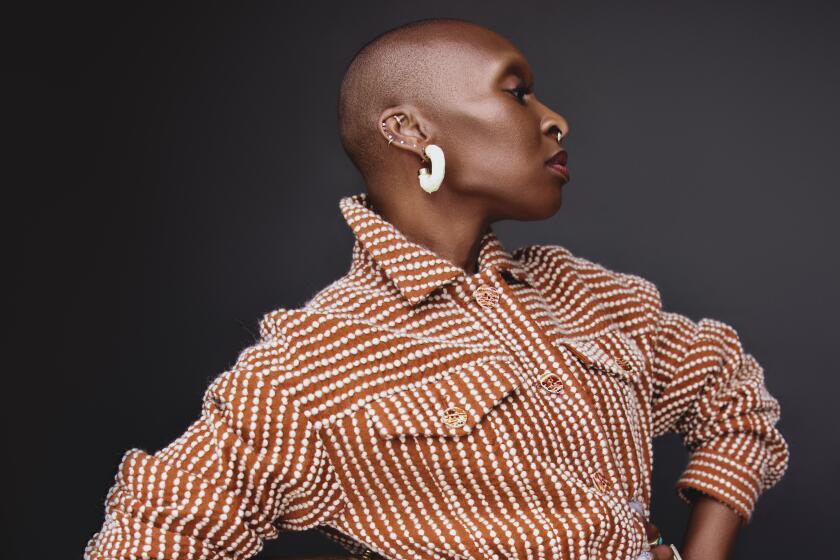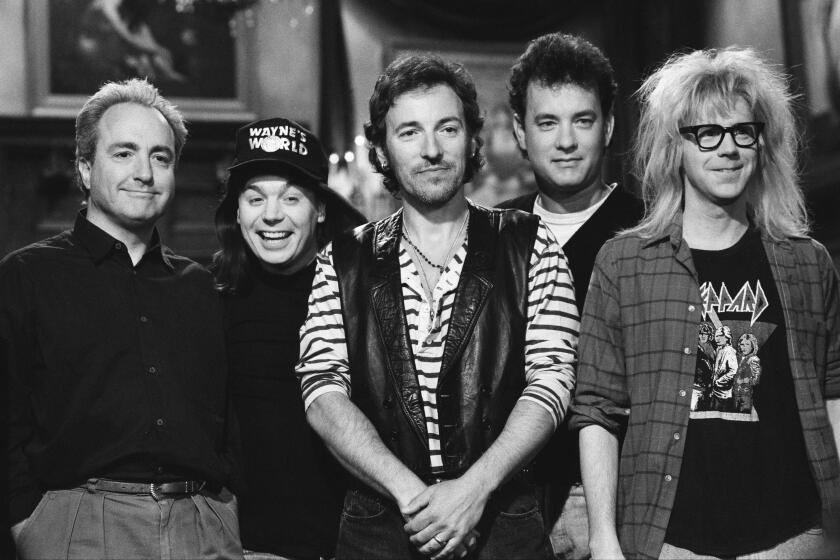ART REVIEW : Coming to Grips With Real World : Exhibits: Santa Monica Museum of Art pairs a show of Robert Tannen’s ecological pieces with a survey of Golden State architects.
- Share via
The Santa Monica Museum of Art is not large, but it does have the capacity to surprise. It has a way of not bogging down in its own exhibitions schedule, bouncing merrily from the latest in vanguard installations to Lost Generation photographs by Lee Miller. SMMA’s building was, of course, designed by Frank Gehry, Los Angeles’ main claim to pride of place among the Olympians of contemporary architecture.
Gehry’s spiritual fingerprints are all over two new exhibitions in his building--”Robert Tannen, Citizen Artist” and “Angels and Franciscans,” a survey of 11 contemporary California architects, including Gehry. The shows share an ad hoc approach to linking art to the real world and blurring the line between the two to release fresh meanings.
Robert Tannen is in his mid-50s, works in New Orleans and is admired by Gehry. Now we get a chance to admire him too. Tannen grew up surrounded by the tacky glamour of Coney Island and the ambience of his father’s bookstore, a hangout for Abstract Expressionists. Later, he studied philosophy, psychology and design. He worked with Buckminster Fuller and admired the great landscape architect Frederick Law Olmstead.
His exhibition space looks like the attic of a particularly passionate collector of sociologically significant junk. The place brims with old bottles, ranging from ornate liqueur decanters to jugs for Mountain Red and dented plastic disposables. One batch is full of water samples Tannen collected and labeled “Pacific Ocean Springs,” “St. James River Water.” Another bottle battalion is full of rocks, beads, cork, cloth and whatnot. Makes you wonder why we usually only put liquids in bottles. When we throw them out, they displace a lot of space. Wouldn’t it make more sense to fill them with something?
Tannen gets you thinking that way. Ecologically. But he’s not preachy. You can’t quite tell who he is. Too sophisticated for a cracker-barrel folk artist, too poetic for an anthropologist.
One reason Tannen is likable is that he chose to work in New Orleans where artists do not get famous in a big hurry. He seems to be the qualitative peer of people such as Allan Kaprow, Joseph Beuys and Robert Irwin. Obscurity doesn’t necessarily equate with virtue, but when an artist this good stays out of the mainstream it says something nice about him.
Tannen wrestles gently with big problems that leave most commentators lugubrious, self-righteous or sentimental. His piece about the homeless is called “Homeness.” It consists of metal shopping carts filled with colorful duffel bags, bundles made of ornate carpeting or a sturdy suitcase filled with nuts. Nearby stands a portable heater with no fuel.
It seems, at first, to be a naive suggestion that we make things a little better for the homeless by giving them the best pushcarts and attractive luggage. The stinger is, of course, the immediate realization that the notion is absurd and we have to have a better solution.
The catalogue tells stories of various civic projects in New Orleans to which Tannen has contributed. They tend to a shared subliminal profile where the artist’s grand scheme had to be built down until his main contribution was something like the quasi-invisible one of convincing the city not to knock down historic buildings to accommodate a new bridge.
The biggest single thing in Tannen’s exhibition are his stacked “Shotgun Houses.” Made of galvanized sheet metal, they look like gigantic Monopoly board pieces and function ambiguously as everything from pure abstract sculptural modules to vehicles for social commentary about housing and city planning.
Embedded in all his collections of bottles, shells, driftwood and the rest is a silent admission most reformers hate to entertain: the idea of helplessness. The possibility that there are problems without apparent solutions drives people of action crazy. The poet, on the other hand, knows what to do when there’s nothing to be done: make poetry and believe that it is a solution.
Tannen thinks about things that are important in New Orleans, like jazz and seafood. He takes a big model of a game fish, mounts it on a cross atop a carved chair and calls it “Crucifish.” He takes an ornate Victorian piano and stacks boom-boxes and a television on it and calls it “Santa Monica Music Box.” The works judge nothing. They evoke smiles and questions.
Tannen’s exhibition was organized by Adolfo Nodal .
“Angels and Franciscans” was put together by Bill Lacy and Susan deMenil. Its rather self-indulgent catalogue is quick to deny that the included architects have been influenced directly by Gehry. Clearly, however, they have all drunk deeply from the same well of California elixir. The notion of a world in flux predated political upheaval and economic crisis in the Golden State. We have a mind-set that includes resident natural disasters and built-in eccentricity.
This sense of things being permanently out of kilter informs all the work. Frank Israel has a weakness for roofs that look collapsed. Eric Owen Moss shows a cast-metal house model that resembles a puzzle of a sphere half disassembled. The architects feel free to play with form as did the Cubists of old.
Time and history can be tinkered with at will. Craig Hodgetts and Hsin-Ming Fung evoke Piranesi’s prisons in drawings, then leap into the future with a strange model for the “Sunflower Corporation,” marked with odd rotating towers that could be anything from satellite dishes to solar collectors.
Robert Mangurian and Mary-Ann Ray come up with a charming, virtually free-standing artwork called “The Archeology of Furniture.” They’ve actually built furniture depicted in the 14th-Century paintings of Giotto. Neat.
While the architects set the clock running both directions at once, they also feel free to jump styles and categories. Holt Hinshaw Pfau Jones claims inspiration from hot-rod makers in a series of models called “Either/Origins.” These picturesque Ur dwellings with twig roofs meet the clean rigors of the Bauhaus. The result makes one suspect inspiration from the archaic futurist style of “Star Wars” films. So does Eric Owen Moss’ model for a Nara Convention Center.
These architects avoid the mannered excesses of Postmodern eclecticism while also participating in them. Instead of matching and mixing, say, a Cape Cod cottage with a Carpenter Gothic mansion, they reach beyond normal architectural categories. Like Gehry, Stanley Saitowitz, Thom Mayne/Morphosis, Mark Mack and others plumb the aesthetics of industry and pop culture.
Much that’s here is frankly visionary, experimental and impractical. What is built or looks buildable, like Lubowicki Lanier’s “O’Neill Guest House,” appears fresh and bracing.
Koning Eizenberg’s “Electric Art Park” comes to grips with contemporary reality in a strip of Venice row dwellings designed for the growing number of people who, like artists, live and work in the same place.
Santa Monica Museum of Art, 2437 Main St., through March 28, closed Mondays and Tuesdays, (310) 399-0433.
More to Read
The biggest entertainment stories
Get our big stories about Hollywood, film, television, music, arts, culture and more right in your inbox as soon as they publish.
You may occasionally receive promotional content from the Los Angeles Times.










